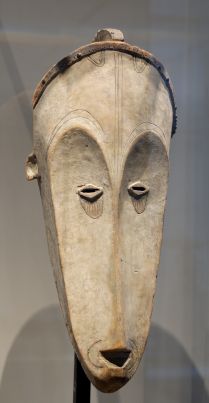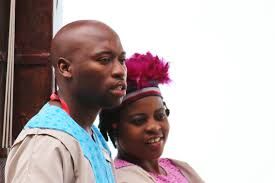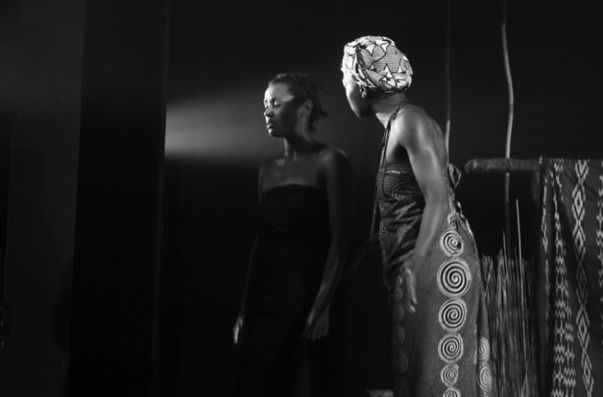African Theater – Development, Influence and Items
Contents
What is African Theater?
African theater is a theater based on discrete historical and national patterns. Likewise, in this theater, colonial boundaries ignored cultural and linguistic units and ancient movements across the continent, and it is believed that this was due to particular societal circumstances such as trade (including the transatlantic slave trade), religion and exploration, which brought different ethnic groups into contact with each performance and often influenced in a way that is still evident in the 21st century.
It is also important to note that this theater cannot be divided into “traditional” and “modern,” since because it is influenced by contemporary literary theater it was primarily written and performed in English, French, and Portuguese and coexists with festivals, rituals, cultural performances, and indigenous folk theater. Thus, the richness of theater in Africa lies very much in the interaction of all these aspects of performance.
How did African theater develop?
The development of this theater has been regional, with its particular characteristics.
English-speaking West African Theater
The countries of Ghana, Nigeria and Sierra Leone (and to a lesser extent Gambia), in addition to the English-speaking areas of Cameroon, have produced a rich theater since their political independence.
Ghanaian theater in African theater
Ghana produced two female playwrights Efua Sutherland and Ama Ata Aidoo, whose Sutherland’s writings were done in Akan and English. Foriwa (first performed 1962) and Edufa (first performed 1962) dealt with political issues relevant to the challenges of independence. The play Anansewa’s marriage (1975) is a witty form of comedy being politically relevant in the way it describes the creation in dramatic form of anansesem.
Thus the theater had a director and created a Ghanaian Drama studio in Accra to explore traditional performance styles and spaces.
Nigerian Theater in African Theater
The rich cultural heritage of the nation, particularly from the south, created the conditions for political debate, social cohesion, celebration and lament. The Nigerian playwright grew up in a world where theater literally had a place in the street, in performances of masquerade figures such as Egungungun, and festivals relating to burials and crafts, arts, seasonal rhythms and marriages.
Similarly, the vibrant tradition of popular theater (such as Yoruba opera) was also a resource that the literary playwright used and drew upon as an inspiration.
Sierra Leonean theater in African Theater
An important initiative was the creation of Krio language drama, particularly through the work of the writer’s linguist Thomas Decker, who in the 1960s translated Julius Caesar and As You Like It into the language widely spoken in the country.
Cameroonian theater in African theater
Cameroon has a strong English language theater and it was Sankie Maimo who established his reputation in 1959 with his Justified Self and wrote regularly in the 1990s. So, the main theater that was done in Cameroon was popular theater.
Kenyan theater in African theater
In Kenya, there was pre-independence theater that was largely in the hands of the white settlers and reflected their tastes. Similarly, in Nairobi there was a resident repertory theater reproducing the best of the West End. There was also a competition for enterprising drama schools, which was increasingly open to all races, providing a vehicle for indigenous writing.
Similarly, the often violent struggle for independence in Kenya and elsewhere produced powerful protest theater, and the process of independence was brought into drama increasingly articulated in the struggle against what was seen as neocolonial rule. Equally, the performance with its imaginative pseudo-documentary style, use of music and militant dance, recall the subversive use of these elements in the struggle for independence, which is one of the major political works of modern African theater.
Ugandan theater in African theater
Uganda has an active theater culture and has developed particular initiatives in the use of theater for educational and developmental purposes in exploring theatrical possibilities in the form of traditional performance. An important (and sophisticated) act in that context was Rose Mbowa Uganda’s Mother and Children (premiered 1987).
What are the types of African theater?
Traditional theater in African theater
In Africa there is a diversity of theatrical traditions, in which almost all the time, elements of oral and mythological tradition are incorporated, dance, music, dialogue, masks and costumes are part of the same performance, and there is no separation between the stage and the audience.
The colonial period in African theater
At the time of colonial rule in Africa, numerous indigenous art forms were eliminated by Western missionaries because they sought to spread the Christian message through biblical dramas and sacred representations, which were quickly adopted by Africans, adapting them to their own traditions.
The theater of independence in the African theater
The political situation of independence was reflected in the theater, in which dramas by African authors multiplied, inserting local traditions into typical European structures. One of the most outstanding authors was the Nigerian Wole Soyinka, who produced in English.
Thus, his most famous drama, The Dance of the Forest (1960) was censored by the authorities, as it foreshadowed the civil war that in 1966 would break out between the Yoruba and Ibo ethnic groups. Similarly, another of his famous dramas was what is known as, The Lion and the Pearl (1963), set in rural Nigeria.
The current development of African theater
Since independence in 1980, Zimbabwe has become a thriving center of pan-African experimentation, exchange and collaboration. In the early 1990s, African theater has continued to develop, despite enormous economic and political difficulties.
Who are the representatives of African theater?
Women in African theater have had an active participation in all areas of the theatrical craft, from their roles as dancers, singers or troubadours, to their role as writers, directors and the modernization they represent, they show how valuable is the weight they play within the theater and society in general.
In Africa, theater is a social phenomenon that is difficult to delimit and distinguish from other disciplines. Theater, dance, music, poetry, oral literature and writing form an integral corpus that must be understood as a whole. Their functions within the religion or in different practices within the community represent not only a means for political expression, but also a vehicle for the survival of tradition.
Ghanaian Ama Ata Aidoo, considered the first African playwright, wrote her first play, The Dilemma of a Ghost (1964), when she was only twenty-two years old, making a significant career in academia.
Therefore, her style that is located within the contradictions between the West and the African world, making depth in the disjunctions of the diaspora and giving visibility to women, trying to demystify their image, so that, her work was theatricalized with great success. After serving as Ghana’s Minister of Education in 1982, she won the Commonwealth Writers Prize, in addition to many other awards.

Another transcendent figure for the cultural universe of Ghana was Efua Sutherland. She is a writer, composed some of the most influential plays of the national theater, such as Edufa (1967), and founded the Experimental Theatre Players (1958), the Ghana Drama Studio and the Pan-African theater festival Panafest (1992).
Likewise, her Pan-African activist narratives were first in the world of cinema, in which she opened the door for African female filmmakers with Araba: The Village Story (1967) and earned respect and prestige inside and outside Africa, being an irreplaceable institution in the history of African theater and cinema.
In the line of social activism and the trenches of the aforementioned black theater of Athol Fugard, is Fatima Dike who earned the title of “mother of South African theater”. Her play The Sacrifice of Kreli (1976) was the first to be published by a black woman during Apartheid, and the first in a long line of plays dealing with race relations, friendship among township women, urban life and the rise of drugs among young people.
Thus, when you can see even a fragment of his play ‘So What’s New?’ you can notice the strength of the characters and the importance of their struggle for the time in which he starred in it.


